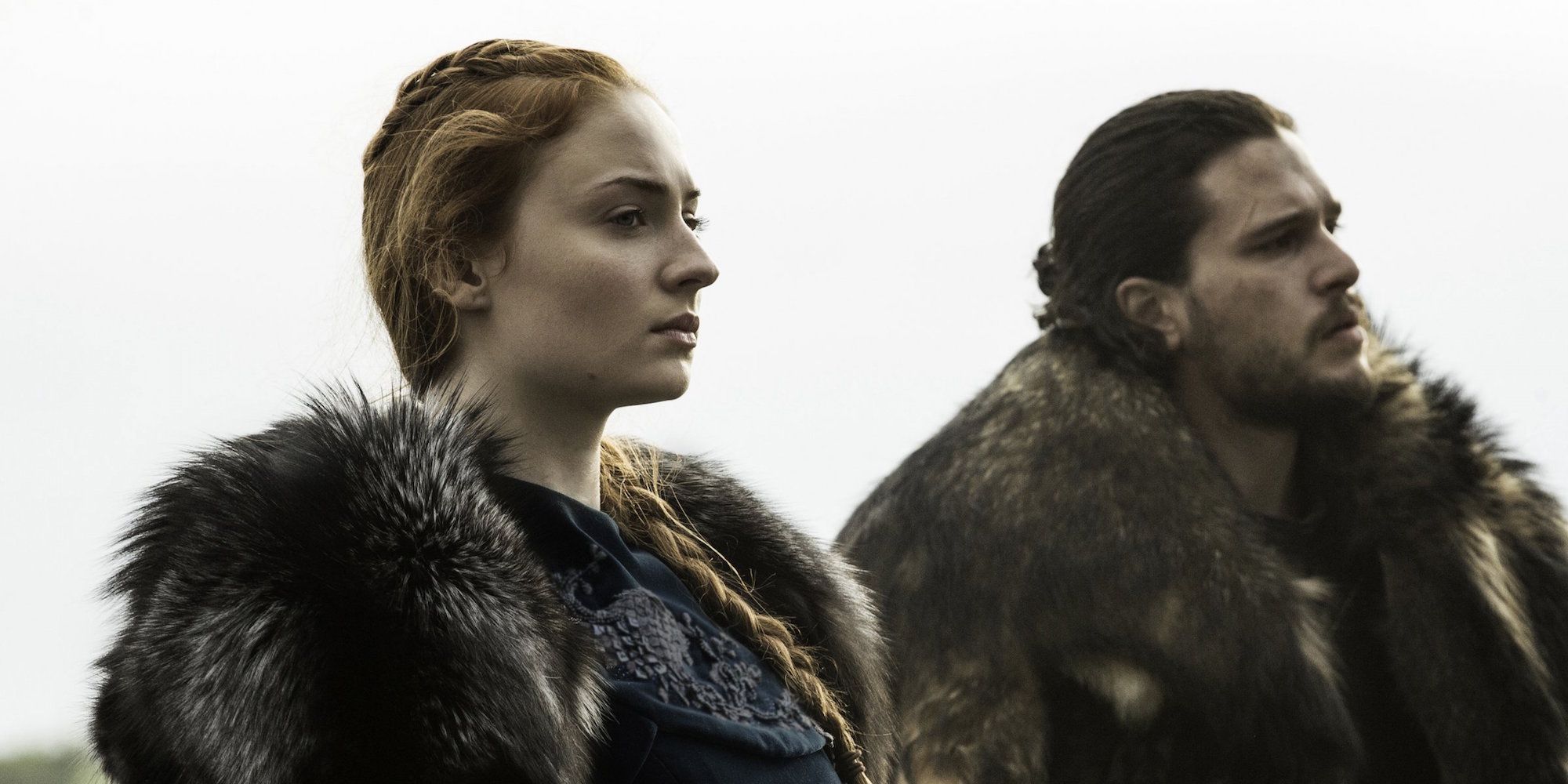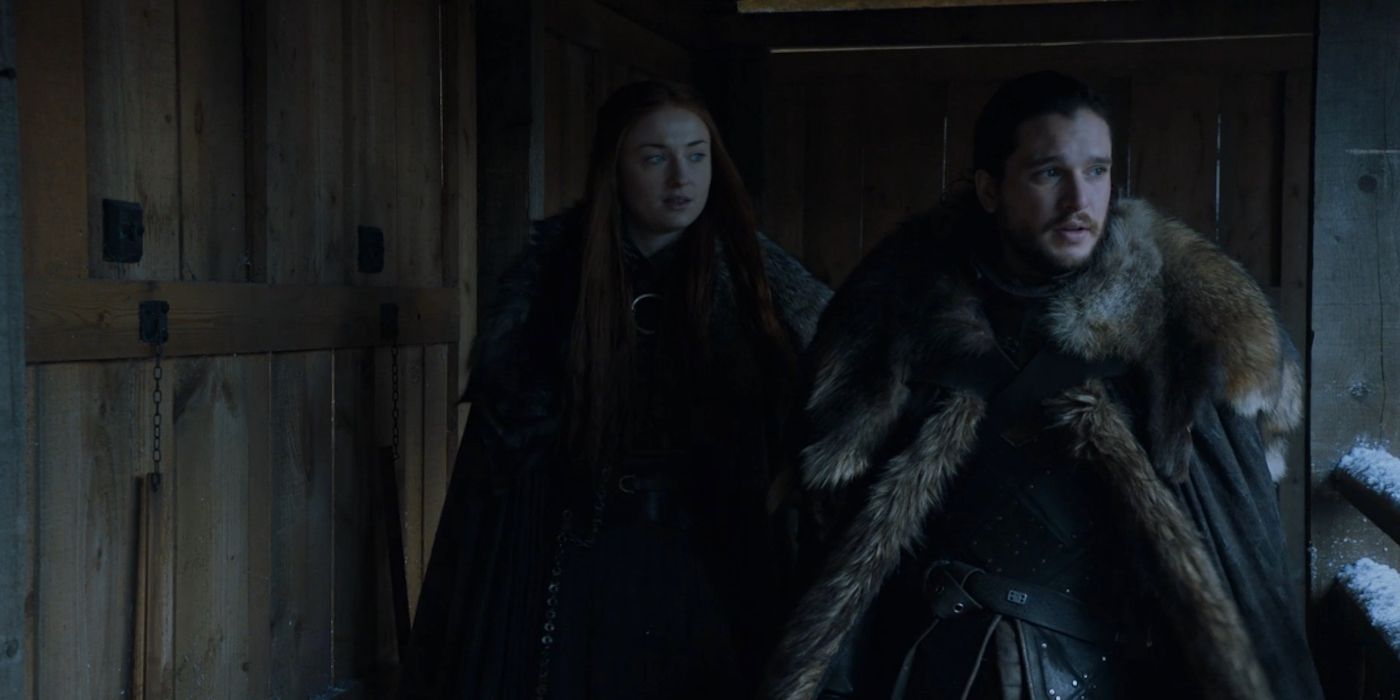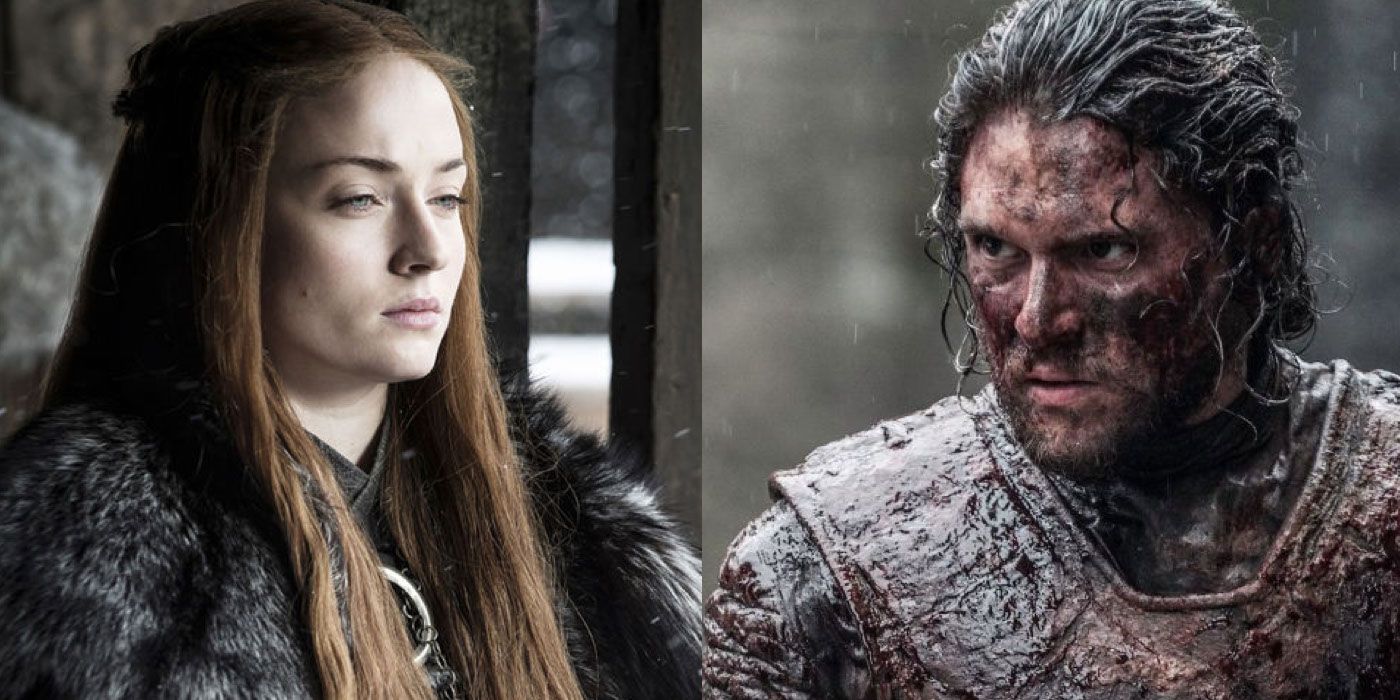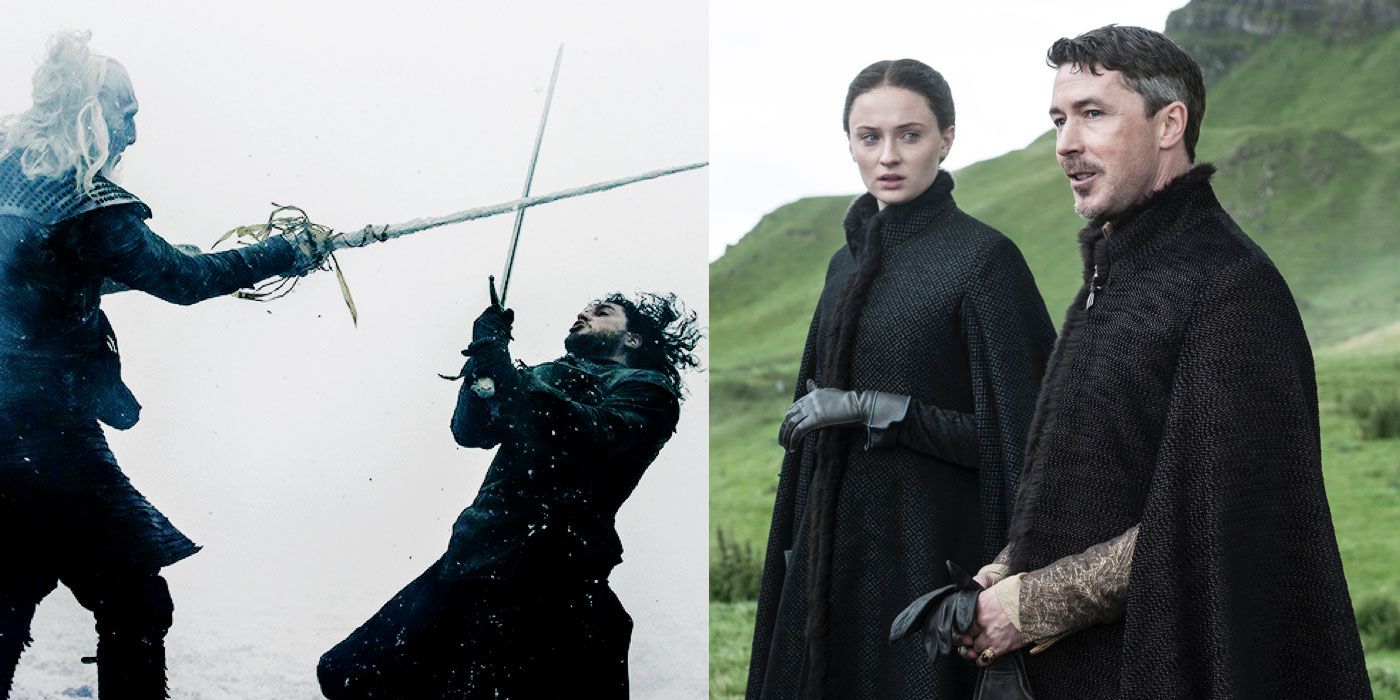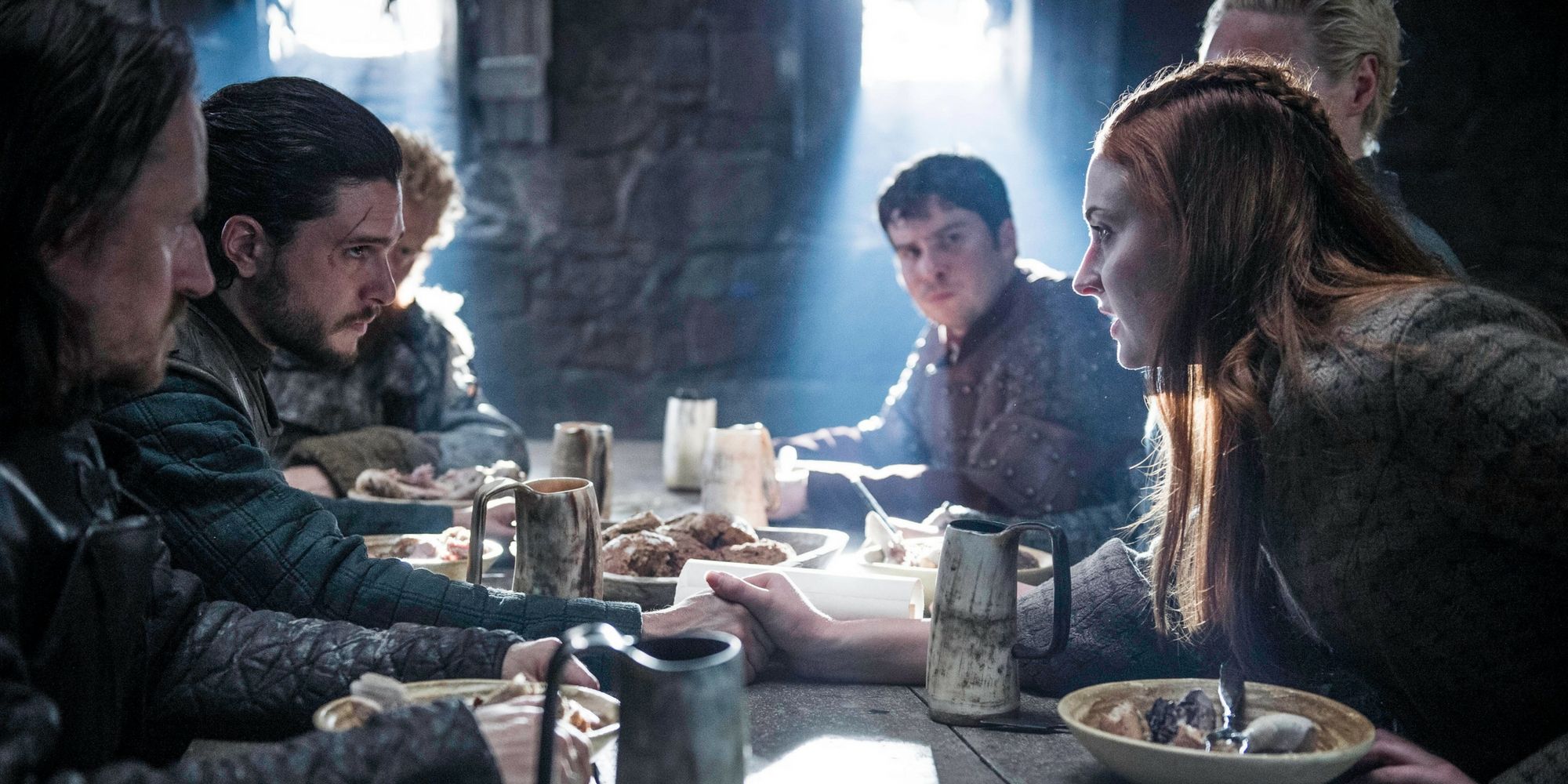With the return of Game of Thrones on Sunday, the penultimate chapter of the hit HBO series has begun. As one of the last 13 episodes of the show and the premiere of season 7, ‘Dragonstone’ had the unenviable task of setting up the beginning of the end for one of the world’s most popular television series. But while a good deal of the episode’s extra large running time was devoted to planting the seeds for the rest of the season and series, the slower pace also allowed the leaner ensemble to shine in ways their characters rarely have in the past few years.
Some of the strongest scenes in the episode came thanks to the growing tension between Sansa Stark and Jon Snow. As the rightful heir to Winterfell and the newly proclaimed King in the North, both have political reasons for wanting to take charge. At the same time, their two separate stories over the past six seasons have shaped them both into intelligent and driven leaders who each bring a lot to the table. As a result, they share very different worldviews and priorities, leading to their tense tête-à-tête in the great hall of their family castle.
The exchange has many asking who was right and who was wrong, but the reality is that both of their plans were sound, they merely speak to different interpretations of how to move forward. And it’s that very dichotomy that has not only shaped both the show and books since the beginning but will be crucial moving towards the end game.
Sansa and Jon’s Argument
The argument in question may seem like a trivial matter, but it’s the perfect discussion for the writers to map the contrasting personalities of Sansa and Jon as leaders. In legal terms, Bran is the true heir to Winterfell and thus the one who should be crowned the King in the North. Given that most of the world thinks he’s dead, however, that honor falls to Sansa. In the Dorne worldview, that holds double as Sansa is the eldest living Stark. Either way, she has the strongest claim. Not to mention, it was her planning that brought Littlefinger’s troops last season and won back Winterfell from the Boltons.
On the other hand, Jon is a Stark in blood and was once the Lord Commander of the Night’s Watch. He’s also a gifted military leader and covered himself in glory during the Battle of the Bastards. What’s more, he’s not only seen the true threat of the White Walkers but fought—and killed—them. For the Northerners, it seems they have an easier time ignoring Jon’s bastardy than Sansa’s gender.
When the two square off over whether to punish or pardon the Umbers and the Karstarks, both Sansa and Jon prove whose child they are. Jon chooses history and family honor, refusing to let the wartime actions of a few strip away centuries of loyalty between the great Northern houses. Sansa, meanwhile, shows some shades of Catelyn but ultimately proves who taught her about life: Cersei and Littlefinger.
While Jon admires the steadfastness of Ned and Robb, Sansa remembers that their rigid ideology got them killed. Jon feels it’s more important to bind together the remaining Northerners against their common enemy, while Sansa wants to ensure traitors are punished and the loyal are rewarded. The reality is, they’re both right.
Next Page: [valnet-url-page page=2 paginated=0 text='Politics%20and%20War']
The Politician and the General
Jon is a wartime king. He’s proven time and again that on the field of battle that he’s extremely gifted. He’s also shown that he’s a terrible politician. In fact, pushing his beliefs on others literally got him killed. There’s no doubt he’s the right person to lead the North against the White Walkers, but he’s proven on several occasions that he’s incapable of actually ruling.
Sansa, on the other hand, has little experience in war; but she’s been through crucible after crucible in the titular game of thrones. From Cersei and Tyrion to Ramsay and Littlefinger, she’s had to learn the hard way what it means to have power and what it means to have none. She knows that, in the long term, traitors can’t be abided and friends need to be rewarded.
Ironically, both Sansa’s and Jon’s belief systems led to Robb beheading Rickard Karstark and hanging his men back during the war. Thanks to the Karstarks’ betrayal, Robb felt duty-bound to carry out their execution. But he also wanted to prove that punishment would always follow treason. His actions would go on to ignite the Karstarks’ rebellion against the Starks and prove to be the first piece of Robb’s eventual downfall.
In the end, Jon is right in this specific circumstance. While Sansa’s plan is the politically sound one, this is no typical war. Politics and houses mean nothing to the White Walkers, so a united front is the only real answer. Jon has shown that even centuries of animosity are meaningless when it comes to the threat facing Westeros. Once, he died for his beliefs. But now, everyone will die if they don’t follow him. If there’s to be a functioning Westeros after the defeat of the Others, however, Jon is going to need Sansa as much as she needs him.
Fantasy versus Politics
In George R.R. Martin’s A Song of Ice and Fire book series, magic and fantasy are all around the edges. While certain storylines are more intensely steeped in these concepts, the entire world Martin has created is full of these ideas. The show has scaled back on much of the fantasy and flair from the books, but the overall arc of both the story on the page and the one on the screen involve something otherworldly.
At the same time, both ASOIAF and Game of Thrones are stories about politics and history, delving into the nuances of war, scheming, and legacy. And while the two sides of the story are often told separately, they’ve begun to dovetail more and more as the tale heads toward its end.
Now that the show is in its last two seasons, we see this merger more prominently than ever. The entire plotline in the North is based on the threat of the White Walkers, and even the coming war in the South will be defined by dragons. In the end, both arcs will likely collide, giving us the most fantastical version of the story yet.
It’s this very juxtaposition that Sansa and Jon embody. Sansa’s story has never been touched by the fantasy elements of the show. In the books, she’s one of the few Stark children who isn't a warg, and she’s never had any dealings with blood magic, R’Hllor, dragons, or wights. Her tale has unfolded right in the middle of the game of thrones, from watching the death of her father to enduring the machinations of Cersei to the being swept up in the schemes of Littlefinger.
Through it all, she’s learned to be a shrewd and cunning politician, able to get into the heads of her opponents and manipulate them. She also knows what Westeros needs as a realm and in many ways is more prepared to sit the Iron Throne than even Daenerys, who’s only driven by dreams of vengeance.
Jon has certainly dealt with realpolitiks. From the earliest stages of his story, however, he’s been one of the leading fantasy characters. Jon is one of a handful of people in all the realm who know the White Walkers exist, not to mention he’s fought and killed them and understands their history. While he’s not as steeped in magic as Bran, he’s spent much of the past few seasons interacting with zombies and giants. In the books, he’s also a warg who has wolf dreams and possibly even a Bran-like connection to his direwolf Ghost. And let’s not forget that he was literally brought back to life by a fire deity and his ancient sorcerer.
---
In Sansa and Jon, we have the two sides of Game of Thrones. It’s fitting then that the beginning of the final two seasons of the show uses their ideological clash as a meditation on the twin aims of the series. By the end of the show—and likely this season—the fantasy and political elements of the series will merge. When they do, both Sansa and Jon will need to pool their resources and skills to not only defeat the White Walkers but usher Westeros into peacetime following the great war to come.

